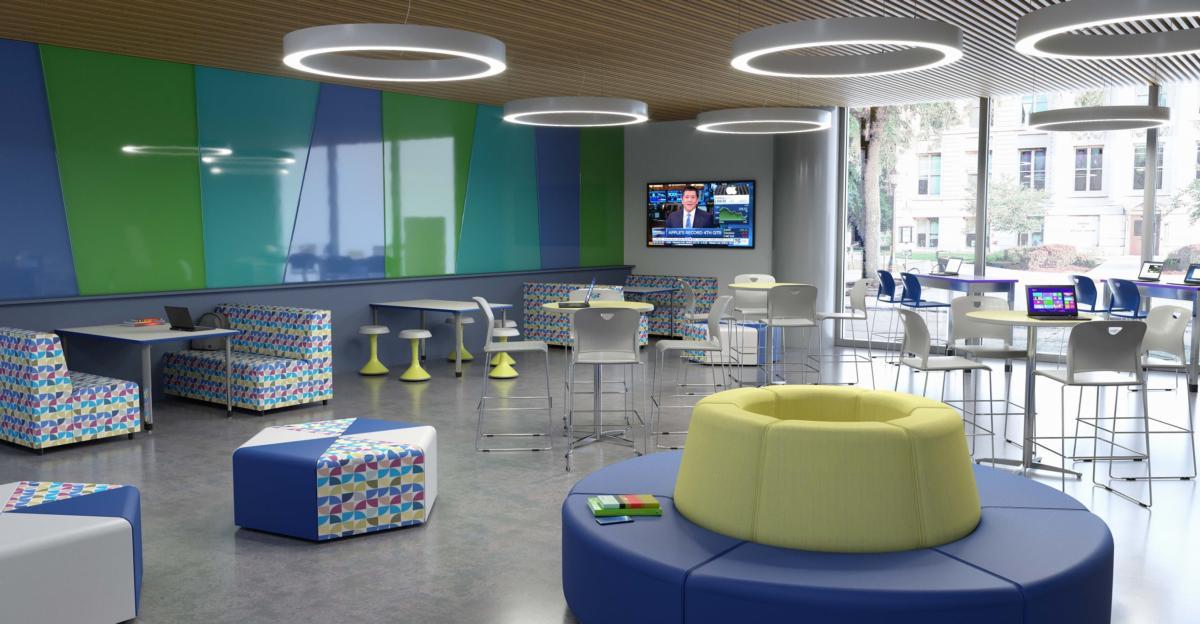Hybrid Classroom Design: How to Create Flexible Learning Spaces for the Future
the world of education is rapidly evolving, and hybrid classroom design has become essential for facilitating flexible learning spaces that support both in-person and remote students. As technology advances and the demand for adaptive teaching methods grows, educational institutions must rethink their classroom layouts to ensure accessibility, engagement, and success for all learners. In this comprehensive guide, we’ll explore how to design a hybrid classroom for the future, highlighting key benefits, practical tips, real-life case studies, and actionable recommendations.
What is Hybrid Classroom Design?
Hybrid classroom design refers to the intentional planning and structuring of learning environments that cater to both in-person and remote students concurrently. Unlike conventional classrooms,hybrid spaces utilize technology and modular furnishings to enable seamless interaction,collaboration,and versatility.
- hybrid Learning Spaces: Combine physical and virtual elements to facilitate real-time instruction and engagement.
- Flexible Configurations: Allow educators to quickly reconfigure rooms based on class size, activities, or learning mode.
Benefits of Flexible Hybrid Learning Spaces
Designing a hybrid classroom with flexible learning spaces offers numerous advantages for both students and educators:
- Inclusivity: Accommodates diverse learning needs and preferences.
- accessibility: Supports students who cannot attend in-person classes due to health, distance, or other barriers.
- Engagement: Promotes interactive learning through technology and active collaboration.
- Futureproofing: Prepares institutions for evolving educational models and unexpected disruptions (e.g., pandemics).
- Resource Efficiency: Optimizes the use of space, technology, and staff.
Key Elements of Effective Hybrid Classroom Design
A successful hybrid classroom design requires careful consideration of space planning, technology, and pedagogy. Let’s break down the essential components:
1. Adaptable Physical Spaces
- Modular Furniture: Use tables, chairs, and desks that can be easily moved and rearranged to support various teaching formats—lecture, group work, or individual study.
- Clear Sightlines: Arrange seating so every student, whether in-person or online, can see and interact with the teacher and digital displays.
- Multi-zone Layouts: Create distinct areas for different activities, such as presentation, collaboration, and independant work.
2. Robust Technology Integration
- Interactive Displays: Equip rooms with smart boards or large screens to display content to all students simultaneously.
- High-Quality Audio & Visual: Install microphones and cameras to capture lessons for remote participants.
- Reliable Wi-Fi and Connectivity: Ensure strong internet access for seamless streaming and participation.
- Collaborative Platforms: Use tools such as Google Classroom, Microsoft Teams, or Zoom to facilitate communication and assignments.
3. Flexible Teaching Approaches
- Blended Instruction: Combine synchronous (real-time) and asynchronous (self-paced) activities.
- Active Learning: Encourage interaction through group projects, discussions, and problem-solving.
- Personalized Learning Paths: Use technology to tailor assignments and feedback to individual learner needs.
Practical Tips for Designing Future-Ready Hybrid Classrooms
- Assess Existing Spaces: Conduct audits of current classrooms to identify strengths and gaps in flexibility and technology.
- Engage Stakeholders: Gather input from teachers, students, IT staff, and administrators on needs and preferences.
- Choose Scalable Solutions: Invest in modular furniture and technology that can be upgraded and reconfigured as requirements change.
- Prioritize Ease of Use: Select tools and layouts that simplify transitions between teaching formats and minimize setup time.
- Train Educators: Provide comprehensive professional development on using hybrid classroom technology and managing flexible spaces.
- Monitor and Iterate: Regularly review classroom performance and feedback to make ongoing improvements.
Case Studies: Real-World Examples of Hybrid Learning Spaces
University of Southern California (USC)
USC implemented technology-rich hybrid learning environments across its campus, featuring movable furniture, wide-angle cameras, and touchscreen displays. Faculty reported increased engagement and participation, while students appreciated the ability to join classes remotely without missing vital interaction.
K-12 schools in Finland
Finland’s schools have long prioritized adaptable classroom layouts and technology integration. During the COVID-19 pandemic, these foundational investments enabled a smooth transition to hybrid instruction models, ensuring learning continuity and inclusivity.
First-Hand Experience: Educator Insights
“As a teacher, moving to a hybrid model was initially daunting. But with flexible seating, digital collaboration tools, and careful planning, I’ve seen stronger connections between myself and students—nonetheless of where they are.”
Many educators echo this sentiment: hybrid classroom design, when done well, can foster relationships and boost student outcomes.
WordPress Styling Tips for Hybrid Classroom Design Articles
- Use Colorful Headings: Apply CSS to give headings a distinctive color for visual hierarchy (e.g.,
color: #2980b9for H2 tags). - Highlight Important Points: Use
tags or colored boxes to make key data stand out. - Use Bullet Points & Numbered Lists: Enhance readability and break down complex topics.
- Add Blockquotes for Testimonials: Visually seperate first-hand accounts to boost credibility.
- Include Internal links: Connect to related resources on your site about classroom technology and learning spaces for SEO.
Conclusion: Designing Flexible Spaces for Lifelong Learning
Hybrid classroom design is more than a trend—it’s a paradigm shift that empowers educational institutions to serve diverse learners in an ever-changing world. By creating flexible learning spaces, integrating robust technology, and fostering innovative teaching styles, schools and universities can future-proof their environments for success.
Whether you are a teacher, administrator, or facilities planner, embracing hybrid learning design ensures you are ready for the classroom of tomorrow. Begin by assessing your current spaces, collaborating with stakeholders, and investing in tools that adapt as education evolves. The journey to flexible, student-centered learning starts today!
Ready to create your own hybrid classroom? explore our Classroom Design Guide for more tips and resources.

